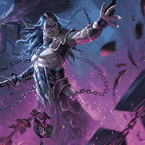Welcome to the World of Flesh and Blood!
If you're here reading this, I don't need to pitch the game to you. Flesh and Blood has already made its initial impression in you. But getting into a TCG can be overwhelming. This article goes over the basics of how to get started, from formats and heroes to best buy-in approaches.
We will not be going over the rules of the game here; for more information on that see the official game rules.
Heroes and Classes
First, let's break down the classes in the game and their named Heroes. In Flesh and Blood, you take the role of a Hero in a one-on-one fight to the death, with each class having their own strengths and weaknesses. On top of that, each Hero has their own ability, leading to a proficiency in particular strategies. Matching your Hero to your own particular strategic preferences is key!
Brute
The Brute class is all about big damage, playing the odds, and being fairly tanky. The luck aspect of the class is in the form of discarding cards randomly from your hand, rolling dice for the outcome of certain effects, and banishing cards randomly from your discard pile. Currently, there are three Heroes in the Brute class.

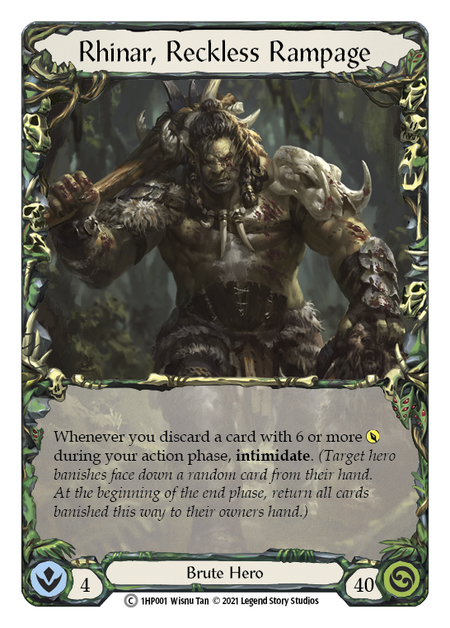
Rhinar has both Adult and Young versions. This hero's favored strategy is built around three mechanics:
- Intimidate
- discarding cards from hand
- 6+ power cards
Intimidate allows you choose choose a random card in the opponent's hand, they must banish it facedown until the end of the current turn. This reduces their options when blocking. Rhinar also tends to use Brute cards with an additional cost of discarding a card at random from your hand. Rhinar and the Brute card pool both reward you for discarding the right cards- namely, cards with 6+ attack.
Kayo, Berserker Runt is a Young Hero. Kayo's main focus is on rolling dice to double (or halve) the damage of his 6+ power attacks. Embrace the randomness and Kayo can be very scary to deal with.
Levia has both Adult and Young versions. Levia, like all heroes from the 4th set Monarch, has a Talent in addition to her Class; this gives her access to the card pools for both her Brute class and Shadow talent.
Her ability has to do with mitigating the negative effects of the Blood Debt found on Shadow cards. In addition to the typical discard costs found in the Brute card pool, Levia also banishes cards from her discard pile as a cost. Blood Debt left in her Banished Zone deals damage to her at the end of each turn- unless you banished a 6+ power card to trigger Levia's ability!
Guardian
The Guardian class is about damage mitigation and huge attacks. Between strong armor, inherent healing, and strong defense reactions, Guardians can be very durable. Guardian cards feature the Crush keyword on most their attacks, which adds disruptive effects if the attack deals 4 or more damage.
Bravo, Showstopper has both Adult and Young versions. Currently, Bravo is the only hero in the Guardian class. His ability allows him to pay two resources to give an attack Dominate, which limits the defender to playing only one card from hand.
Most Guardian attacks are resource intensive, so having a deck with a lot of Blue versions of cards (cards that pitch for three resources) is very important. His specialization card, Crippling Crush, is one of the strongest attacks in the game.
Ninja
The Ninja class all about playing as many attacks in a turn as you can, being rewarded if you play them in the right order. The Combo keyword looks for specific cards to have been played to trigger massive payoffs. Ninja is known for its efficiency and card draw; this is a class capable of forming a long string of attacks from a small hand.
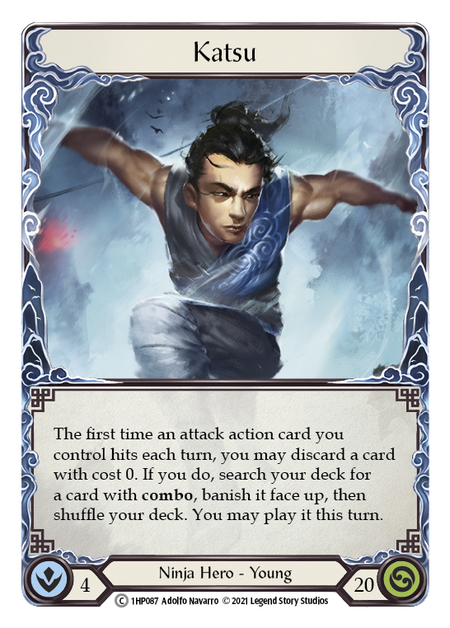
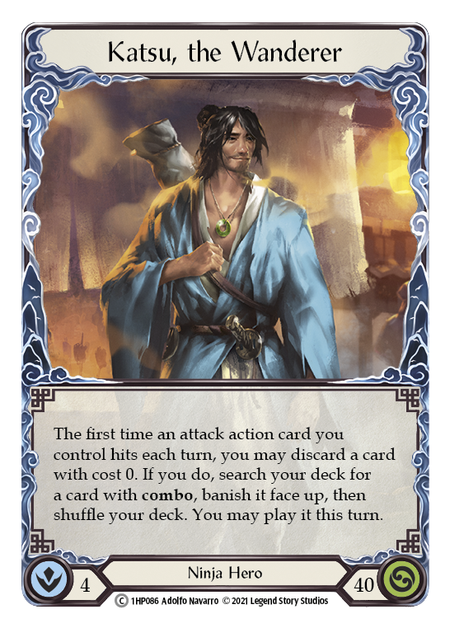
Katsu has both Adult and Young versions. Katsu is all about Combo, his ability allowing him to search his deck for a Combo card if he hits with an attack action. Katsu is the king of stringing together a full Combo line. The key to getting these attacks to hit, and to allow his ability to trigger, is sneaky ways to give them additional power. Don't overlook the power of a long string of attacks, no matter how weak they are!
Ira is exclusively a Young Hero. Ira is the embodiment of efficiency; her hero ability is simple, but extremely effective. The +1 power helps get the magic attack numbers of 4 and 7, breakpoints that make efficient defenses hard. She tends to focus on aggression without caring as much about Combo.
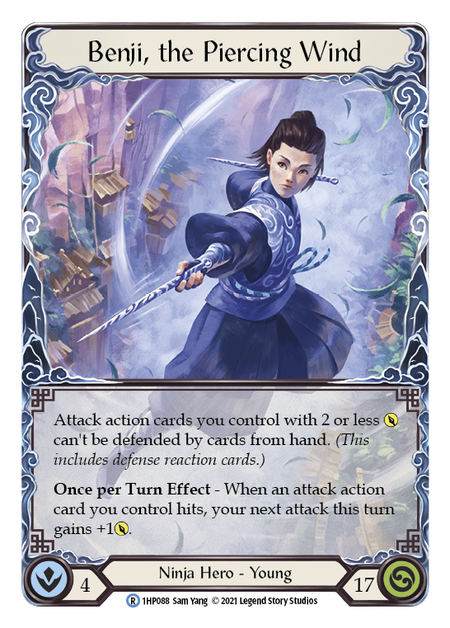
Benji is another hero exclusively available Young. Benji focuses on attacks with low power, then making them hard to block due to his ability before pumping them again with attack reactions. Due to wanting to run the lower power, he also has the advantage of running a lot of Blues, and can pay for more expensive effects.
Warrior
The Warrior class is all about the weapons. Normally a hero can only attack with a weapon once per turn; but between hero abilities and dual-wielding, warriors can keep swinging. While some focus on mixing some attack actions with their weapon attacks, others will focus on hitting really hard with one or two buffed weapon strikes. Still others will try to get as many weapon attacks out in a turn as they possibly can. Pair that with their high quality equipment and multitude of attack reactions, and they are some of the strongest heroes in the game. Warrior attack reactions have the keyword Reprise, which gives the card additional effects if the weapon attack is blocked by a card in hand.
Dorinthea has both Adult and Young versions. Dorinthea is heavily focused on her weapon, the Dawnblade, as her ability allows her to attack an additional time per turn with a weapon. This synergizes perfectly with Dawnblade's ability: a +1 power counter when it hits two times in a turn. In order to ensure the weapon hits, the deck uses a lot of weapon buffing actions and attack reactions. She can both "go wide" with multiple weapon attacks, up to three with the card Twinning Blade, and "go tall" with one big buffed attack that is hard to block.
Boltyn also has Young and Adult versions. Boltyn is more focused on mixing attack actions and weapon attacks. Being a Talent/Class hero (Light Warrior), he has access to multiple card pools. His ability has two main parts that both focus on the Soul mechanic. If he Charges his Soul, his attacks gain +1 power if they are blocked by at least one attack action. The second part is that, as an attack reaction, he can banish a card in his Soul to give an attack Go Again if it has higher power than its base power. This synergizes well with his first ability. Boltyn tends to prefer going wide.
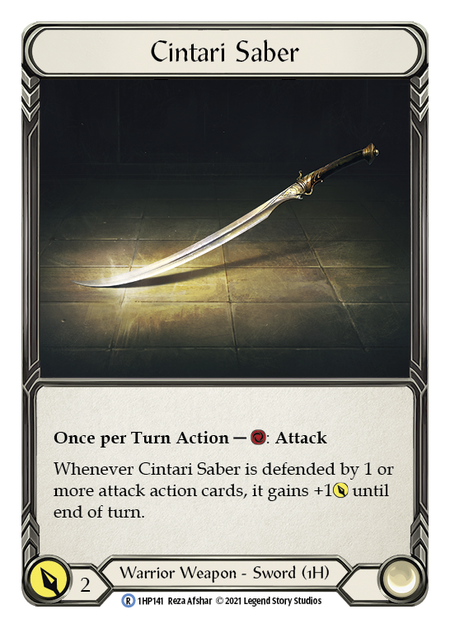
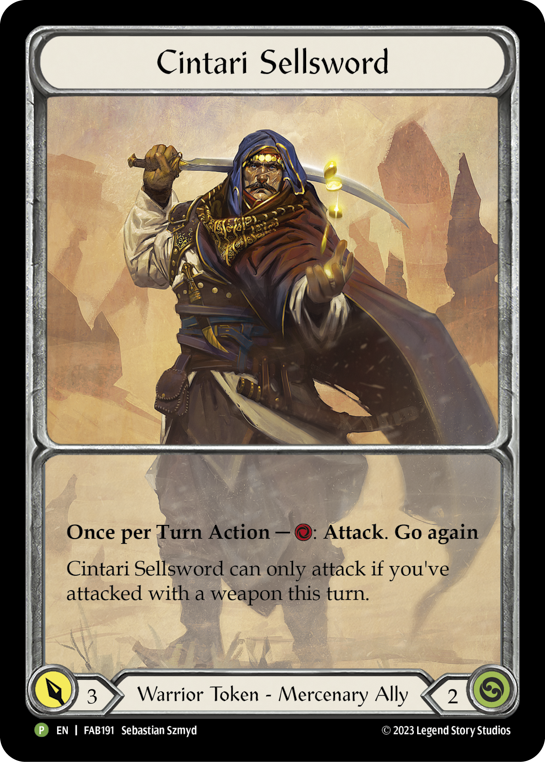
Kassai has only a Young version. Kassai definitely focuses on "going wide" with her Cintari Sabers, using cards like Spoils of War to get go again. She also gets Copper tokens from her ability so she wants to optimize those tokens with the card Cash In to draw cards.
Mechanologist
The Mechanologist class is about mixing your inventions (items) with your weapon attacks and attack actions. They have a variety of items with varying effects. The main keyword is Boost, which allows your attack actions to get go again if you choose to banish the top card of your deck (and it is a Mechanologist card). This pushes you toward a heavily class-focused build, though Mechanologist decks have found success in going the other way and eschewing their class cards for a focus on their Pistol.
Dash has both Adult and Young versions. Her ability allows you start with a Mechanologist item of two or less cost in play, which really allows you to build your deck around that item or adapt your gameplan to counter your opponent's hero. She tends to have two playstyles: extreme aggression and slow control. The first focuses on a resource-intensive form of aggro via the Boost keyword. The latter focuses on defense reactions and multiple Pistol attacks per turn from Induction Chamber.
Data Doll, MKII is exclusively Young. Data Doll is the only hero with 3 Intellect, which means they only draw up to three cards at the end of their turn. To make up for this inherent disadvantage, her ability is very powerful. Whenever a Mechanologist item of cost two or less is banished from your deck (from effects like Boost or Teklo Foundry Heart) they can put it into play for free. This can definately help with your loss of card advantage- but at this point, Data Doll is considered nearly impossible to pilot. Perhaps you'll be the one to crack the code!
Ranger
The Ranger class has quite a unique rhythm to their play. They utilize Arrow attack actions that can ONLY be
played from the Arsenal. Ranger is known for its very strong on hit effects, so most build focus on making the attacks hard to block via buffs and Dominate. Because their Bow weapons don't inherently have any attack, Rangers are dependent on their cards for any and all aggression; they can be more susceptible to fatigue, and have to be careful to conserve cards after defending.
Azalea has both Adult and Young forms. She is the only Ranger hero as of now. Her ability can give Arrows Dominate, but requires that you pull those Arrows off the top of your deck. Therefore, Opt is an important keyword for Azalea so she can manipulate the top of her deck. Rangers can play with extremely low resource costs, and Azalea's specializations have some of the strongest on hit effects in the game.
Runeblade
The Runeblade class supplements their damage output with Arcane damage, a form of damage that can't be blocked by conventional defenses. This is usually accomplished by making Runechants, which are tokens that deal 1 arcane damage to the opponent alongside an attack. The dual presentation of damage makes it extremely difficult for an opponent to block all of the damage you're dealing. Opponents often compromise the equipment they'd like to be using to instead equip pieces with Arcane Barrier, which allow them to defend against Arcane damage via pitching.
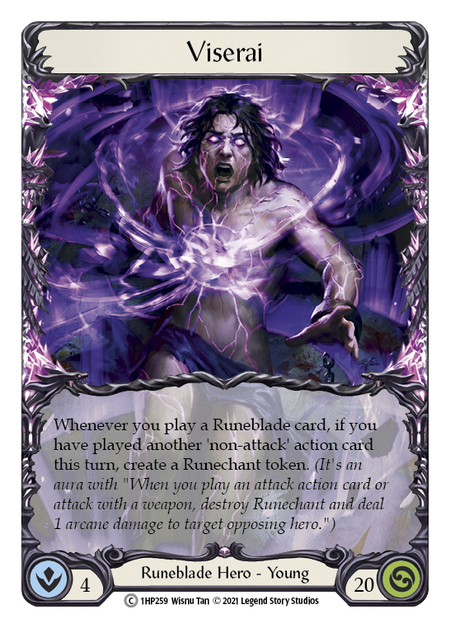
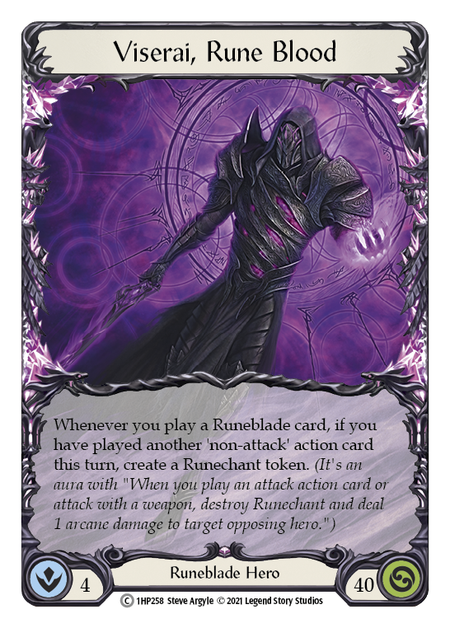
Viserai has both Adult and Young versions. He is highly focused on created Runechants, his ability making one every time you play a Runeblade card after you've already played a non-attack action for the turn. Many builds will have lower attack counts, even going a few turns building up Runechants before unleashing a devastating combination of big attack and big Arcane damage.
Chane has both Adult and Young versions. He is a Shadow Runeblade, meaning he has access to the Shadow an Runeblade card pools. Chane takes a different approach to the class, focusing more on playing multiple attacks per turn and playing cards from the Banished Zone. His ability lets him push further on his turn by granting an attack action go again, but the token stacks and for each one you banish the top card of your deck at the start of your action phase. This may cause you to run through your deck faster, but the Shadow card pool includes many cards he can play from the Banished Zone, effectively expanding his options in hand.
Wizard
The Wizard class is all about dealing bursts of Arcane damage during either players' turn. The ability to interrupt your turn on your opponent's turn is unique to this class. Due to their focus on Arcane damage, it also forces the opponent to run equipment that can block Arcane rather than their preferred equipment.
Kano has both Adult and Young versions. His ability allows him to play cards off the top of the deck at Instant speed. There are so many possibilities with this effect, allowing Kano to string together a series of powerful cards on either players' turn. To balance this, Kano starts with a lower life total (75% of most heroes). Currently Wizard is very strong in Blitz, where the lower life totals put your opponent within range of a one-turn-kill.
Illusionist
The Illusionist class is the newest addition to the game. They focus on Auras, which are a type of non-attack action, and big attacks. Those attacks have high power and strong on hit effects, but have a keyword called Phantasm, which destroys the attack if it's blocked with a 6+ attack. The illusionist has many ways to build their deck.
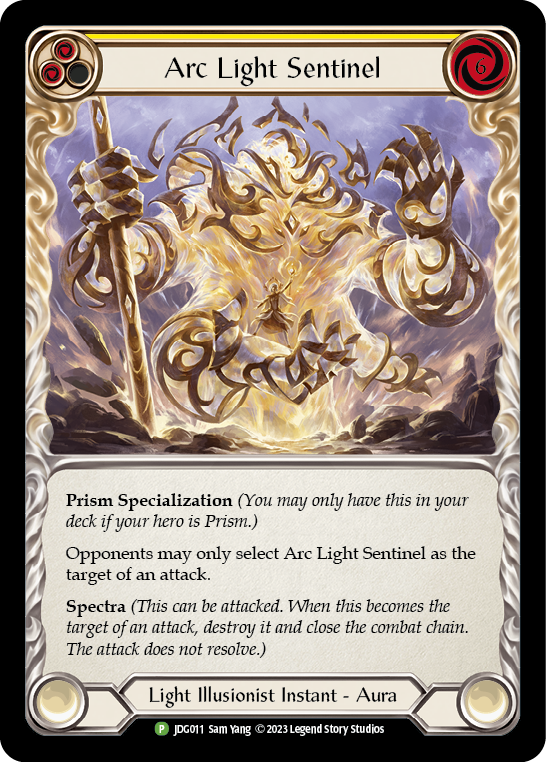
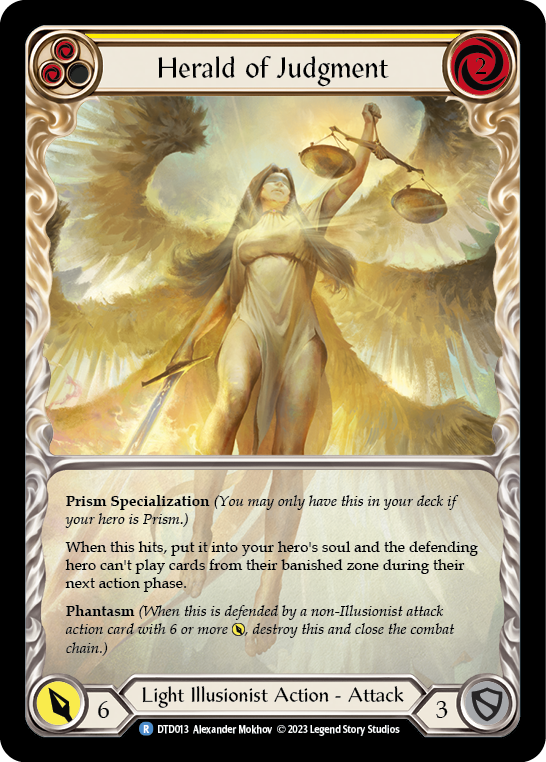
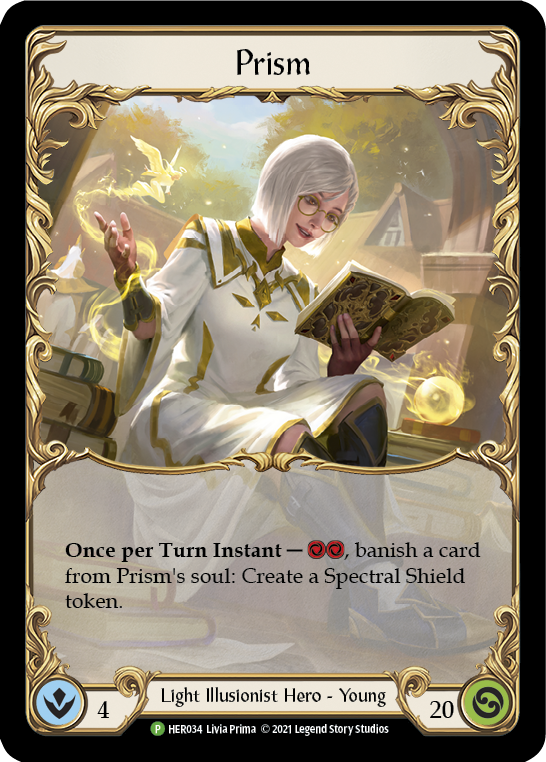

Prism has both Adult and Young versions. She is a Light Illusionist, meaning she has access to Light and Illusionist cards. Her ability allows her to banish a card from her Soul in order to make a Spectral Shield. (The Soul is a mechanic unique to Light heroes, and is a zone under the hero card where cards can both be placed into and removed from with card effects.) I think her most powerful card is the weapon Luminarus, which allows her to attack with her auras and gives her Illusionist attacks go again.
Novelty Classes: Merchant & Shapeshifter
The Merchant class is not fully supported yet as it does not have any class cards and can only use Generics. So far it seems the Merchant will deals with coin tokens, such as Copper and possibly Silver and Gold. Until it gets full support, we wont know for sure.
The Shapeshifter class is another class that is not fully supported and has no class cards.
Kavdaen has only a Young version. With only Generics at his disposal and his ability leaning towards a control playstyle, he has limited deckbuilding opportunities. His most common decks are either Control (defending and siphoning health until they are low enough for him to finish with a
big prepared Dominate attack) or Big Midrange (Sloggism into big attacks, usually with Dominate to make it hard to block it all).
Shiyana has only a Young version. With the specializations currently available to her, she tends to lean towards big attacks with some burst Arcane damage. This deck focuses around Lesson in Lava, Alpha Rampage, and Teklo Core.
Formats
Let's talk about the formats of the game. Three of the formats are competitively supported and are the most common, with the fourth (the multiplayer Ultimate Pit Fight) being a casual format that has yet to build up much support.
Currently, Blitz is the most popular format, with its faster gameplay making it ideal for tournaments. The decks consist of forty cards, maximum two of each card, with an equipment deck of eleven. This is a best-of-one format, with minor sideboarding opportunities in the form of equipment/weapon choices at the start of each game. Blitz utilizes Young Heroes, and enjoys a more diverse character pool. As a first-time player, I recommend getting into this format first.
Classic Constructed is the premier format of Flesh and Blood, being utilized at the highest levels of competitive play. Decks consist of 80 cards total (equipment included), but the minimum deck size is 60 + equipment; this is how the game accommodates sideboarding, or tailoring your deck to your opponent. This is also a best-of-one format, so sideboarding is incredibly important. Similar to Blitz, you reveal your heroes then proceed with setting up your equipment and main deck for the game. These decisions on what cards to have in your "sideboard" and when to add them to your deck, is one of the reasons this format is the preferred competitive format.
The Sealed format comes in two forms, Sealed Deck and Draft. Flesh and Blood was designed with Sealed in mind, and the packs feature a card distribution system that gives an excellent game experience every time. These events are great for new players to get into the game, increase their collection, and learn about the cards and how they work together.
What's this going to cost me?
It depends on why you're here! If you are in the game just to play it, then it's pretty affordable, especially if you start by focusing on a couple classes. If you want to collect 1st edition and rare foils, that comes with a hefty price tag. To understand the collectible side of the game, I highly recommend reading Freyja's FaB Finance: An Introduction.
If you are looking to get into the game for the first time, I reccommend reading through the heroes and finding a few that stand out to you. Once you have, refer to the list below to see what sets have those heroes. A booster box will run you about $80, and will give you a lot of the common and uncommon cards you will need, as well as a chance as some rarer and more expensive cards. From there, I recommend buying singles
online to fill in the gaps of what you are missing, unless you have two or three heroes you like in the same set.
If you have trouble building your own decks, there are a ton of resources online. Be sure to check out FABDB's deck builder and card gallery. You can check out Alex Truell's recent article on FaB communities to find the ones that answer your needs!
Sets and What You'll Find in Them
Ira Starter Deck
- Ninja (Ira)
Welcome to Rathe
- Brute (Rhinar)
- Guardian (Bravo)
- Ninja (Katsu)
- Warrior (Dorinthea)
Notable Generics: Enlightened Strike, Fyendal's Spring Tunic, Timesnap Potion, and Energy Potion
Arcane Rising
- Mechanologist (Dash)
- Ranger (Azalea)
- Runeblade (Viserai)
- Wizard (Kano)
Notable Generics: Art of War, Command and Conquer, and Arcanite Skullcap
Crucible of War
(this set contained cards for all classes, but is considered supplemental, and is not a good place to start)
- Brute (Kayo)
- Mechanologist (Data Doll)
- Merchant (Kavdaen)
- Ninja (Benji)
- Warrior (Kassai)
Reprints: Rhinar, Bravo, Katsu, Ira, Dorinthea, Dash, Viserai, and Kano
Notable Generics: Gorganian Tome and Springboard Somersault
Monarch
- Light Illusionist (Prism)
- Light Warrior (Boltyn)
- Shadow Brute (Levia)
- Shadow Runeblade (Chane)
Notable Generics: Exude Confidence and Nourishing Emptiness


